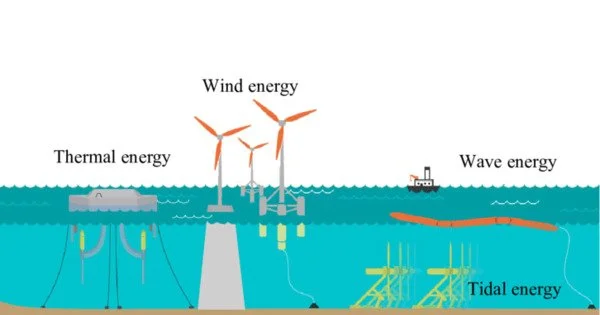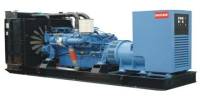Marine energy refers to the energy generated from the ocean, including wave, tidal, and ocean thermal energy. Wave energy is generated by the movement of ocean waves, tidal energy is generated by the rise and fall of ocean tides, and ocean thermal energy is generated by the difference in temperature between the surface and deep waters of the ocean. These forms of energy are considered renewable and sustainable, as they do not produce greenhouse gases or other pollutants. However, the technology to harness marine energy is still in the early stages of development, and it is not yet widely used as a source of power.
It refers to the energy generated from the ocean, including wave, tidal, offshore wind, and ocean thermal energy conversion. These forms of renewable energy harness the natural power of the ocean to generate electricity, and can be a sustainable and reliable source of power for coastal communities. However, the technology for marine energy is still relatively new and requires further research and development before it can be widely adopted.
There are several different technologies that can be used to harness marine energy, including wave energy converters, tidal energy turbines, and ocean thermal energy conversion. These technologies are still in the early stages of development and deployment, but they have the potential to provide a significant source of renewable energy in the future.
There are several different technologies that can be used to harness marine energy, including tidal power, wave power, and ocean thermal energy conversion (OTEC). Tidal power is generated by building a dam or barrier across a tidal channel, which is then used to generate electricity as the tide flows in and out. Wave power is generated by using devices that are placed on the surface of the ocean, such as buoys, which convert the energy of the waves into electricity. OTEC is a technology that uses the temperature difference between the warm surface water and the cold deep water to generate electricity.
Temperature, wind, salinity, bathymetry, and the rotation of the Earth all contribute to strong ocean currents. The primary driving force, causing winds and temperature differences, is the Sun. Ocean currents may be suitable locations for deploying energy extraction devices such as turbines because there are only minor fluctuations in current speed and stream location with no changes in direction. Ocean currents play an important role in determining climate in many parts of the world. While little is known about the effects of removing ocean current energy, the effects on the farfield environment may be a major environmental concern.
















